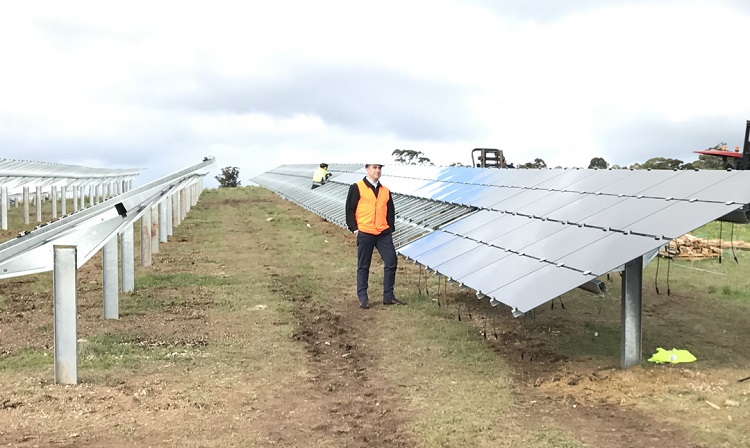Combining solar and methane gas energy production will be achieved in a plant expected to produce 11,000 MWh of electricity each year to power around 1,800 homes in the state of South Australia.
The plant will channel thermal energy from solar panels and methane gas from decomposed garbage through a shared turbine interconnector. A generator will subsequently convert these two energy sources into electricity, which will then be fed into the grid.
“The novel part of this project is the use of buffer land surrounding the landfill site to build a solar power farm, which will capture the thermal heat. Passing that thermal energy through the same inter-connector as the gas turbine has never been done before in Australia, so it’s an exciting time,” said Adam Faulkner, Chief Executive of the Northern Adelaide Waste Management Authority (NAWMA), which is managing the plant.
The plant, comprising a solar farm covering 5,000 square meters, which is to produce around 200 MWh of electricity each year, is expected to begin operating within days and start feeding electricity into the South Australian grid next month.
“NAWMA and the local energy companies got together a couple of years ago and thought, why not utilize the rubbish that’s in the ground to generate some income and electricity for the state. That’s when we put our heads together and thought, if the gas side of the equation has been proven to work, let’s turn our minds to the unused portion of land next to the landfill site and use it as a solar farm,” said Faulkner, explaining the cooperation between NAWMA and South Australian companies Joule Energy and LMS Energy.
Combining solar with an environmentally sustainable waste management solution will ensure South Australia’s further progress on its renewable energy goals. In fact, the state has a target of 50% renewables by 2025, but according to recently released data of the Australian Energy Regulator, it has already surpassed the figure eight years early, reaching 57% in the first nine months of 2016/17 to 31 March 2017, as solar met 7.6% of South Australia’s demand.
Pledged to become the world’s first carbon neutral city, the state’s capital city of Adelaide has earlier this year formally launched Australia’s biggest solar farm and the world’s biggest solar and battery storage plant, including 330 MW of solar PV and a 100 MW/400 MWh battery storage system, which is expected to commence operations by the end of 2017.
This content is protected by copyright and may not be reused. If you want to cooperate with us and would like to reuse some of our content, please contact: editors@pv-magazine.com.








By submitting this form you agree to pv magazine using your data for the purposes of publishing your comment.
Your personal data will only be disclosed or otherwise transmitted to third parties for the purposes of spam filtering or if this is necessary for technical maintenance of the website. Any other transfer to third parties will not take place unless this is justified on the basis of applicable data protection regulations or if pv magazine is legally obliged to do so.
You may revoke this consent at any time with effect for the future, in which case your personal data will be deleted immediately. Otherwise, your data will be deleted if pv magazine has processed your request or the purpose of data storage is fulfilled.
Further information on data privacy can be found in our Data Protection Policy.